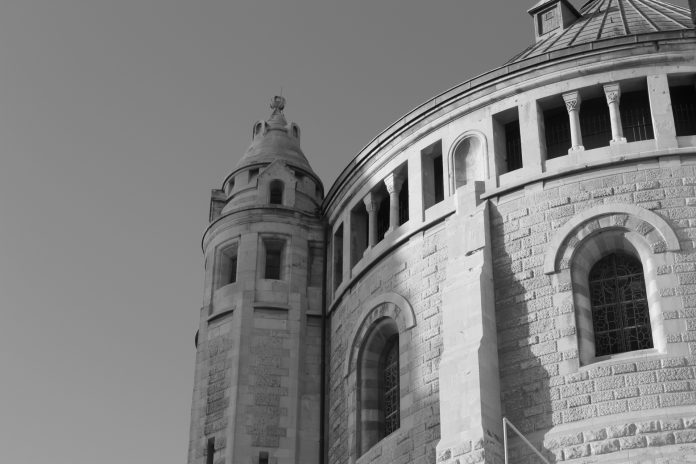Translation : Sandie Daniels
One has to pinch oneself to fully realise we have arrived at
the heart of one of the most vibrant cities in the world. How
many myths, how many hopes, how much hatred can
crystallize around this thrice holly town ?
We arrive through the North. Between the hills, some valleys
allow communication through. Control over these has
always been fundamental to secure the city. Nowadays,
checkpoints mark out the free way snaking its way into the
town. The strategic stake of the place springs to mind
immediately. On the extremity of the Judean plateau,
Jerusalem’s altitude often oscillates above 600 meters.
However, we don’t feel the cold, far from it. White
overpowers the walls. Limestone provides the building
material. In the Karst, the Gihon spring provides precious
water in this mediterranean place. Our guide Jeremy tells us
the precious liquid was one of the issues of the Jordanian
conquest in 1949.
We walk through an arabian quarter to access the Mount of
Olives. From there, we can see the old city, one of the most
ancient continuously populated towns in the history, we are
reminded by Jeremy. The blue and the gold from the Dome
of the Rock catch our eyes in this alabaster-like landscape.
Unfortunately, we are not allowed to access it. We are going
to have to contempt ourselves with admiring this mosque,
reminding us that the place hosts in one spot three religions
of the Book, all monotheistic and prophetic. There, the
Quran says Muhammad was told how to pray in the right
conditions. But another tradition places in the same spot the
sacrifice of his son to God by Abraham.
At the back, we can hardly make out the four quarters
sharing a 0.82km2 square : the jews to the south, the
armenians in the south-west, the christians in north west
and the muslims in the north east.
On the way down, the guide reminds us of the traditions
written in the Bible about Christ’ doings whilst preaching on
the Mount of Olives. To our left, stones sitting on graves,
some of them for thousands of years, recall the faith of the
Jews in eternal life after death. Resting close to the Mount of
Olives is very important to these people as they are waiting
for judgement day.
After lunch, we stroll through the small streets of Mount
Zion. This is where lays King David’s tomb and where Christ
had the last supper. Chappels become Mosques, which
become themselves Synagogues, depending on times and
rulers. In the whole city, archeology is there to testify the
age of a settlement or the ownership of a possession.
We come into the jewish quarter through the Zion Gate.
There stands the Kotel Hamaaravi, the West wall of
Solomon’s temple for the Jews. We have to split into two
groups to access it. The Jewish dot not have the prerogative
of a patriarchal religion, and the girls will have to stand a bit
further away to watch the danse being executed in a circle,
on the occasion of A-list personality present here today. This
exceptional celebration gives us a good measure of the
fervour of the crowd. Further away, in the sheltered portion
of the wall, the tension of the bodies in movement
expresses the intensity of the prayers. The strands dangling
from belts remind us of the 613 commandments from God,
as do the kipas their submission to God. After another
security gate, we are in the muslim quarter. In the network of
narrow streets, reality meets our imagination. We have to
walk in line between two rows of small shops to arrive on
Via Dolorosa in turn leading to the Basilica of the Holy
Sepulcher
There, the different representants of the churches
(armenian, syriak, catholique, coptes, orthodox) are fighting
for the right to keep up Christ’ tomb. The crowd is dense.
We can hear all languages of the world. Impossible to make
it to what is considered the most sacred tomb in
reasonable time, as tiredness sets into some of us.
We are now getting to the end of the visit and are reaching
Jaffa’s Gate, at the end of the Armenian quarter. Around
every street corner, monuments show the vital perseverance
with which men have written their convictions into stone, to
reinforce their faith.
Time has come to go back to the youth hostel and check
that our bedroom doors are protected by a Mézouza on the
doorpost. Faith is also illustrated through these little acts.










